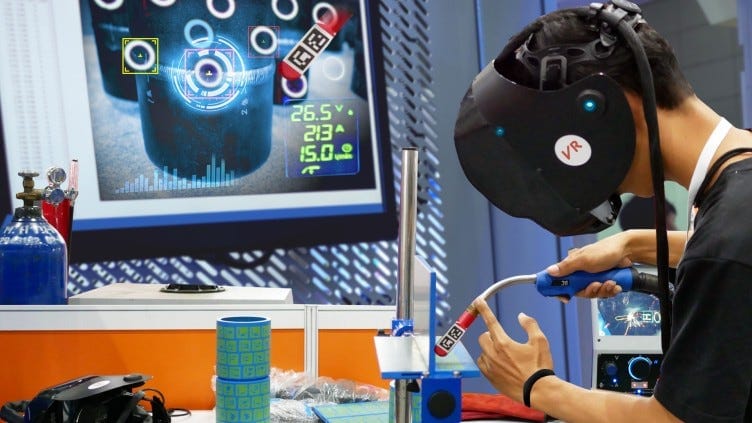
VR lets people experience realistic and interactive virtual environments. Using VR makes training better for many jobs. But ensuring it’s easy to use and covers all the requirements before creating a VR training program is essential. In this post, we’ll discuss why making a good user experience and storyboard for VR training programs is necessary.
Understanding Value Proposition: A value proposition is the unique value or benefits a product or service offers its users. Regarding VR training solutions, it is essential to clearly define the value proposition before investing in development. Validating the value proposition entails understanding the target audience’s needs and pain points. Conducting user research, surveys, and interviews can provide invaluable insights into potential users’ expectations, preferences, and challenges. By gaining a deep understanding of the users’ needs, organizations can refine their value proposition and align it with the goals of their VR training solution.
Storyboarding for Enhanced User Experience: Storyboarding is essential in VR development, allowing designers, developers, and stakeholders to visualize and iterate on the user experience. By creating a sequence of scenes, interactions, and user paths, storyboarding helps identify potential usability issues and refine the feature set before entering the development phase. In addition, the emergence of AI-powered tools such as Midjourney, Stable Diffusion, and Dall-e has simplified and expedited creating of storyboards for VR training solutions, enabling designers to generate visual representations and explore interactive user paths with greater efficiency. Through storyboarding, stakeholders can assess the virtual environment’s flow, narrative, and overall user journey. It also enables designers to make informed decisions about the placement of interactive elements, user interface design, and overall aesthetics.
Integrating AI-powered tools in storyboarding has significantly accelerated the development of VR training solutions. These tools leverage advanced algorithms and machine learning to automate certain aspects of storyboard creation, such as generating visual assets, designing user interfaces, and even suggesting interactive elements. For example, Midjourney employs computer vision techniques to analyze user behavior and automatically create storyboards based on real-time data. Stable Diffusion uses deep learning algorithms to generate realistic and diverse visual scenes, allowing designers to explore different scenarios quickly. Dall-e, a language model developed by OpenAI, enables the generation of custom images based on textual descriptions, providing a novel way to visualize and iterate on storyboard concepts. By harnessing the power of AI tools, organizations can streamline the storyboard creation process, iterate rapidly, and ultimately deliver high-quality VR training solutions more efficiently than ever before.
Benefits of UX Validation: Validating the UX of a VR training solution is crucial for several reasons. Firstly, it helps ensure that the proposed features align with user expectations and enhance the learning experience. By conducting usability tests and user feedback sessions, developers can gain insights into user reactions, pain points, and areas of improvement. UX validation also aids in identifying potential motion sickness or discomfort issues that can arise in VR experiences. Addressing these concerns early on can prevent negative user experiences and enhance user satisfaction.
Iterative Development and Continuous Feedback: Validating the value proposition and feature set with UX and storyboarding is not a one-time activity. It should be an iterative process involving continuous user and stakeholder feedback. Regularly incorporating feedback during the development cycle allows for course correction, improvements, and the ability to pivot if needed. Creating an environment that encourages open communication and collaboration between designers, developers, and end-users is essential.
Conclusion: Validating a VR training solution’s value proposition and feature set through UX and storyboarding is critical to its success. By understanding user needs and leveraging AI-powered tools like Midjourney, Stable Diffusion, and Dall-e in the storyboarding process, organizations can expedite the creation of visually compelling and interactive user paths. These AI tools simplify the generation of storyboards, streamline the design process, and allow for rapid iteration and exploration of different scenarios. By combining the power of AI with UX and storyboarding, organizations can develop VR training solutions that deliver enhanced user experiences and improved learning outcomes and drive innovation in virtual reality.
Inspirations
- The Lean Product Playbook: How to Innovate with Minimum Viable Products and Rapid Customer Feedback by Dan Olsen
- Product Discovery: Continuous Discovery Habits by Teresa Torres

